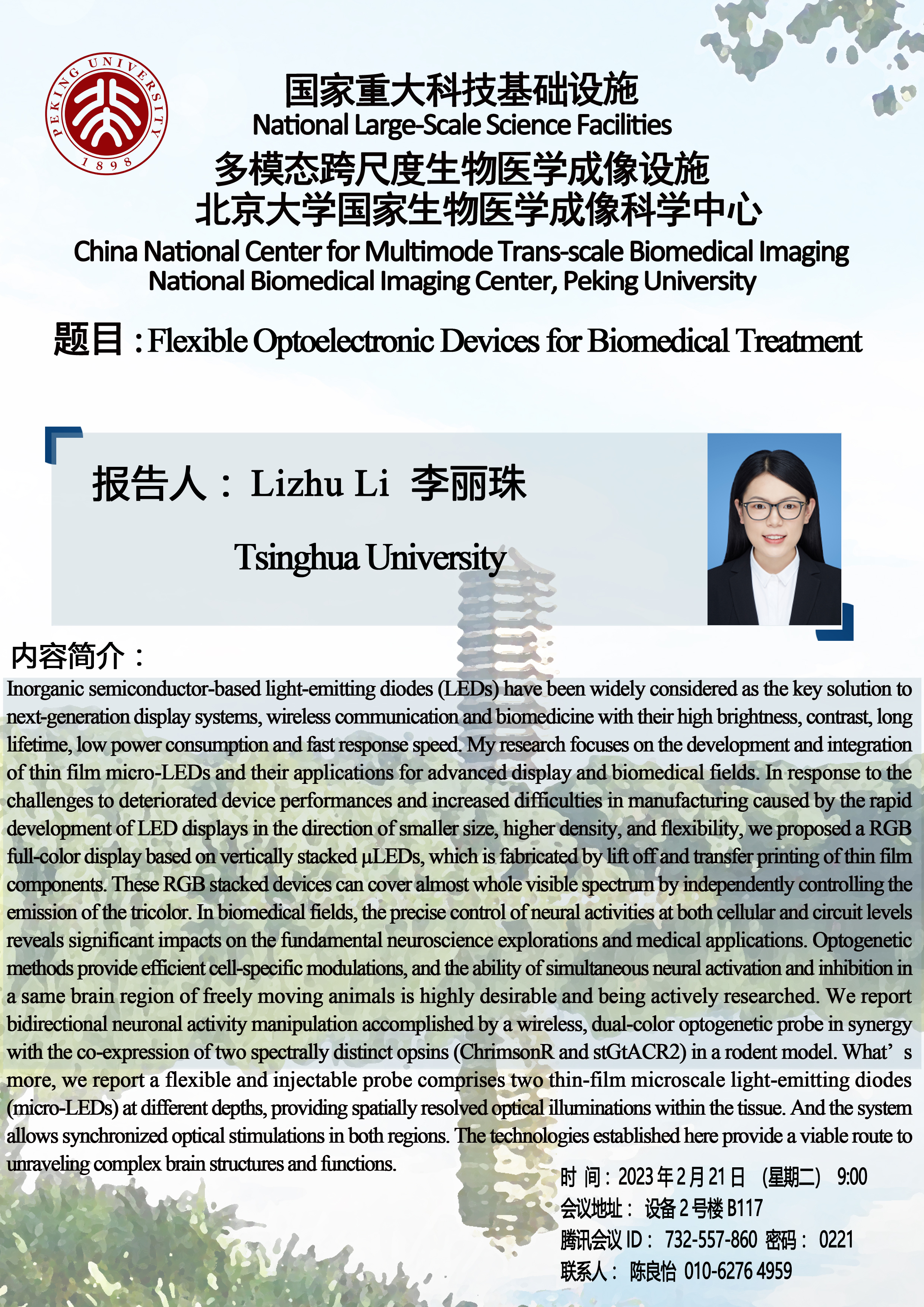Speaker:Lizhu Li (李丽珠), Tsinghua University
Time: 9:00 am, Februray 21 (Tuesday), 2023, GMT+8
Venue: Tecent Meeting ID: 732-557-860 Passcode: 0221
Abstract:
Inorganic semiconductor-based light-emitting diodes (LEDs) have been widely considered as the key solution to next-generation display systems, wireless communication and biomedicine with their high brightness, contrast, long life time, low power consumption and fast response speed. My research focuses on the development and integration of thin film micro-LEDs and their applications for advanced display and biomedical fields.In response to the challenges to deteriorated device performances and increased difficulties in manufacturing caused by the rapid development of LED displays in the direction of smaller size,higher density,and flexibility,we proposed a RGB full-color display based on vertically stacked uLEDs, which is fabricated by lift off and transfer printing of thin film components. These RGB stacked devices can cover almost whole visible spectrum by independently controlling the emission of the tricolor. In biomedical fields,the precise control of neural activities at both cellular and circuit levels reveals significant impacts on the fundamental neuroscience explorations and medical applications. Optogenetic methods provide efficient cell-specific modulations,and the ability of simultaneous neural activation and inhibition in a same brain region of freely moving animals is highly desirable and being actively researched. We report bidirectional neuronal activity manipulation accomplished by a wireless,dual-color optogenetic probe in synergy with the co-expression of two spectrally distinct opsins (ChrimsonR and stGtACR2) in a rodent model. What's more, we report a flexible and injectable probe comprises two thin-film microscale light-emitting diodes (micro-LEDs) at different depths,providing spatially resolved optical illuminations within the tissue. And the system allows synchronized optical stimulations in both regions.The technologies established here provide a viable route to unraveling complex brain structures and functions.
Contact:Liangyi Chen (陈良怡) 010-62764959
Source: National Biomedical Imaging Center, Peking University
